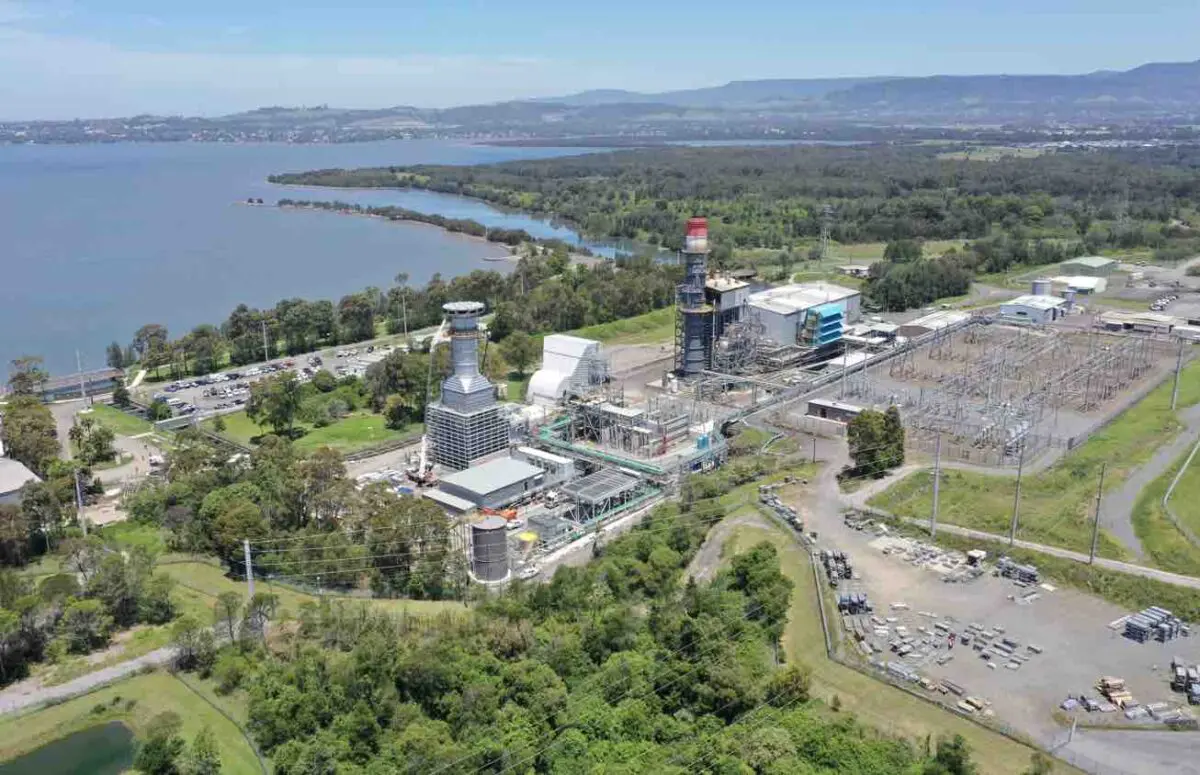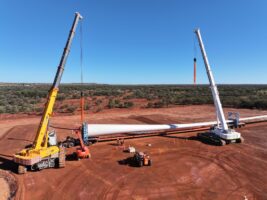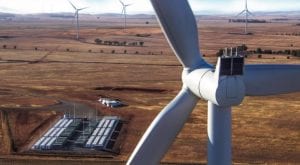Australia’s newest peaking gas generator – the 316 MW Tallawarra B power station on the shores of Lake Illawarra in NSW – has fired up for the first time and expects to be fully operational in early 2024.
The gas-powered peaking plant is being built by EnergyAustralia next to the existing Tallawarra A gas fired power station, and is expected to play a crucial role helping meet peak demand in what is expected to be a long, hot El Nino summer.
Peaking gas generators do not get switched on very often, and work between 1 and 5 per cent of the time. When they are switched on, it’s because demand is very high, other generators have gone offline, or wholesale prices are also very high. Or all of the above.
EnergyAustralia’s Tallawarra B Project Director Ian Black said: “Successfully completing the test fire is a significant milestone toward Tallawarra B’s commercial operation early in 2024.
“We understand the importance of completing this project to help provide energy security for homes and businesses in New South Wales with what is predicted to be a hot and dry El Niño summer,” Tallawarra B Project Director Ian Black said in a statement.
“While there is still more work to complete, we look forward to completing the remaining work to bring Tallawarra B online this summer.
“As Australia continues to transition away from coal to renewables, fast-start gas generation assets like Tallawarra B, will play a critical role in supporting electricity reliability at peak periods and at times of low solar and wind production.”
There is considerable debate about how much gas will be needed in a grid dominated by renewables. There Australian Energy Market Operator, in its draft 2024 Integrated System Plan, revised up its modelled gas peaker capacity by 6,000 MW, but also observed gas will be used less often.
Federal energy minister Chris Bowen came to a similar conclusion.
“The virtue of gas is that can turn on and off real quickly,” Bowen said at the conclusion of the COP28 climate talks in the UAE last week.
“I know that people say correctly, that, you know, gas still has emissions, absolutely it does, I’ll tell you what it doesn’t have emissions when it’s not switched on.
“And if you’ve got gas fired peakers backing up your 82% renewable system that are only turned on rarely. That is a big step forward for emissions reduction, a big step forward. So gas does have a role to play as we get to that 82% renewable that’s reflected in our domestic position.”
The Tallawarra B generator, because it is sited next to the 435 MW Tallawarra A combined cycle gas-powered generator, at least has the advantage of having a reliable supply of gas, in case it does need it.
One observation by AEMO that did pass unnoticed in its draft 2024 ISP was that developers of new gas fired generators should try and void gas network bottlenecks.
“Location decisions for new generators will need to consider availability of gas infrastructure (including pipelines and gas storages), future gas supplies, secondary fuels and proximity to electrical loads,” it noted.
It is sound advice, and was widely interpreted as a reference of the decision federal government owned Snowy Hydro to build a new “hydrogen ready” gas fired generator at Kurri Kurri, where there is no existing gas supply in place.
Even when built, and it is going over time and over budget, Kurri Kurri will be able to generate for a maximum 10 hours and then take a full day to re-supply, analysts say. In effect, it will be able to deliver little more than a big battery that would likely be both cheaper and cleaner.










